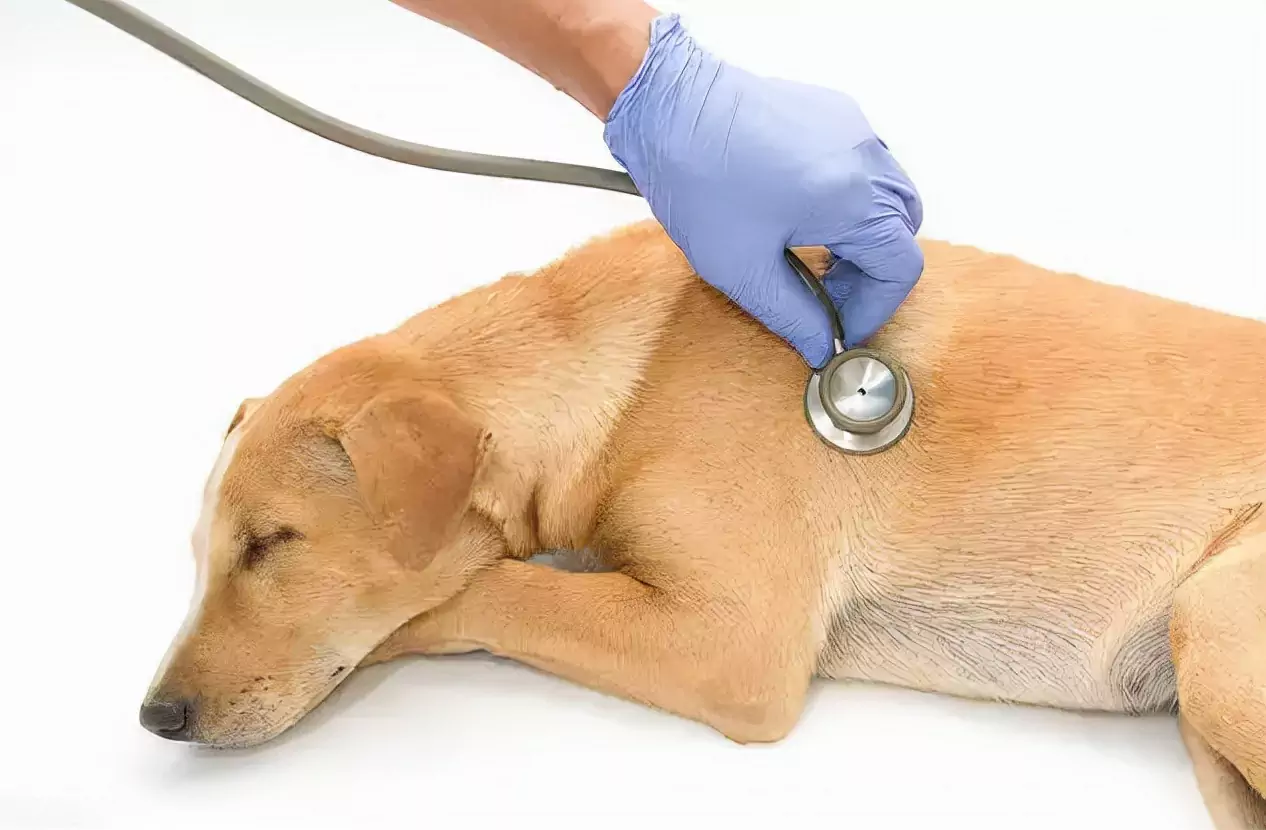How do dogs contract rabies? Rabies Prevention
2022-07-01
How dogs get rabies
The causes of rabies in dogs are self-inflicted and external, self-inflicted due to lack of rabies vaccination, rabies vaccination without antibodies or rabies vaccination with no immune effect, and external factors due to an attack by an animal carrying the rabies virus. Rabies is a disease that kills close to 100 percent of both animals and people. It is recommended that dogs be given an effective regular rabies vaccine every year, and that dogs bitten by dogs of unknown origin be given rabies vaccine and rabies immunoglobulin in a timely manner at the hospital.
Dogs are infected by other dogs or other animals that bite or scratch their skin or are licked by their mucous membranes. Rabies virus develops by invading the nerves through wounds and mucous membranes. This is the main mode of transmission. It is also possible to get rabies from a dead or dying animal that is eaten by a dog and infected with rabies, although this is not very common because rabies virus does not survive long in the natural environment and requires a wound in the dog's digestive tract or mouth to do so.

Rabies prevention
1, Control and elimination of infectious agents.
Rabies dogs are the main infectious agent of human rabies. Therefore, immunization of dogs and trapping of rabid and feral dogs are the most effective measures for rabies.
In rabies endemic areas should be immunized at least 805 dogs in the shortest possible time human. Cats suffering from rabies are also one of the sources of infection and can be immunized where available. Any animal found to be suffering from rabies should be immediately trapped and killed. The carcasses of animals with rabies should be burned or buried deeply (below 2 meters) away from water sources, and should not be skinned or fleshed.
2, Wound treatment.
The wound should be immediately rinsed thoroughly with 20% soapy water or 1% Neosporin, and then wiped several times with 70% alcohol and tincture of iodine. If there is immune serum, can be injected into the bottom and around the wound. Unless the injury to large blood vessels requires emergency hemostasis, the wound may not be sutured or bandaged.
3, rabies vaccination and application of antiserum.
China is currently using the gopher kidney cell culture vaccine, bite victims in 0, 3, 7, 14, 30 days each injection (2ml), serious bites (refers to the head, face, neck or multiple bites), in the full five shots after the 10th and 20th day each injection, vaccine injection in the buttock muscle.
Application of anti-rabies serum: For severe bites or wounds close to the head (e.g. chest, face, upper limbs, etc.), anti-rabies serum must be used to prevent the onset of disease in the short term (before the vaccine takes effect). Injection method: 0.5-1.5 ml per kg of body weight, divided into intramuscular injections, to be completed within 72 hours. Infiltration injection can also be made around the wound. Allergy test must be performed before antiserum injection, negative cases can be applied immediately, positive cases should be desensitized before injection. Allergy test: dilute the serum 10 times with physiological saline, inject 0.1 ml into the skin of the forearm palm side, observe for 30 minutes, the appearance of red rash or papule is positive and should be desensitized. Desensitization method: Inject 10 times diluted antiserum at 0.2ml several times, observe for 10-30 minutes each time, if there is no shortness of breath, rapid pulse or cyanosis, the injection amount can be increased as appropriate. If there is no reaction for three times, the full amount can be injected.
Preventive immunization measures before bite:Preventive injection is advisable for veterinarians, animal husbandry, breeding, slaughtering, leather processing personnel and rabies virus laboratory staff and vaccine production personnel, i.e., with tissue culture adjuvant vaccine, one injection every other month for a total of 3 injections, with a booster injection every 1-3 years.
Does a dog have rabies virus at birth
Newly born dogs generally do not carry rabies virus, larger dogs carry rabies virus and can infect etc. born. This if the previous generation of the canine does not carry the virus, then the newborn dog will not carry the rabies virus, because in fact the infectious disease, so it is necessary to have the source of infection and transmission.
Newborn dogs can't gradually open their eyes until about two weeks after birth, and then it takes another week or two before they can see clearly. The ears also do not hear sounds until five or six days after birth. Therefore, they should not be placed in a bright place to avoid affecting the dog's vision.
The newborn dog's bowels are well taken care of by the mother, so the owner does not need to worry. However, after 20 days, she is a bit overwhelmed. So after this, you should always change the kennel bedding to create a good environment for the puppy to grow.
Vaccination of the dog is the best way to prevent the dog and the owner from malignant diseases such as rabies, and de-worming of the dog is also important for the healthy growth of the dog. If the dog eats and excretes normally a few days after purchase, it should be immunized and dewormed as soon as possible. We recommend the Intervet and Counselling vaccines.
What do dogs transmit rabies through
1, bite: is the most important mode of transmission, the affected animal teeth bite people when secreting rabies virus.
2. Invasion via broken skin and mucous membranes: Saliva from dogs with the virus invades via various wounds and scratches, licked skin and mucous membranes; for example, skin abrasions, eye and anal mucous membranes. Rabies virus infected animals bite, scratch people, or lick the human mucosa and broken skin may lead to the spread of rabies virus, but the virus can not invade the organism through intact skin.
3, slaughter process infection: infected during the slaughter of sick dogs, skinning, cutting and other processes, accounting for a very small number.
4銆丱rgan transplantation: There have been many international reports of rabies infection through organ transplants such as corneas, kidneys and livers of rabies patients.
Extended information
The principle of rabies virus invasion via broken skin and mucous membranes.
The rabies virus invades the body from the broken skin, stays briefly or proliferates in small amounts locally in the wound, and then invades the peripheral nerves nearby; the virus expands centripetally along the peripheral nerves toward the central nerves to the dorsal root ganglia of the spinal cord and then multiplies in large numbers, invades the spinal cord and soon reaches the brain.
The virus replicates heavily in the brain and then expands from the central nerve to the peripheral nerves, invading all the organs and tissues innervated by the nerves, especially the saliva, the taste buds of the tongue, and the epithelium of the olfactory nerve, where the amount of virus is higher.
What are the pre-signs of rabies?
Pre-rabies signs are the pre-rabies symptoms, which occur 2-4 days before the formal onset of rabies and are mainly characterized by nonspecific symptoms such as low-grade fever, fatigue, headache, nausea, and general malaise, followed by panic, irritability, insomnia, and sensitivity to stimuli such as sound, light, and wind. The more typical features are itching, pain, numbness, and unusual sensations such as ants crawling in the healing wound and its adjacent area. The first symptoms last for about 2-4 days, followed by a distinct onset with typical symptoms such as fear of water, wind, and spasms of the throat muscles.
Rabies is a lethal infectious disease caused by the rabies virus that infects the human body. The rabies virus mainly attacks the central nervous system of the human body. The incubation period of rabies varies from a few days to more than 10 years. Most infected patients develop the disease within three months, and during the incubation period the infected person may not have any signs and symptoms and is not different from usual. Most patients will have prodromal symptoms before the onset of the disease, but the symptoms are not typical and do not confirm the diagnosis.
Previous:How do dogs develop neutropenia?
Was this article helpful to you?
Other links in this article
português (Brasil):
Como os cães contraem raiva? Prevenção da Raiva
中文简体:
狗是如何感染狂犬病的?狂犬病预防
中文繁体:
狗是如何感染狂犬病的?狂犬病預防
Comments

Why is my dog throwing up?

Why does my dog keep coughing?

How many months is a dog pregnant? Signs and Phenomena of Dog Pregnancy

How do dogs grow fleas? Ways to get rid of fleas on dogs

Can dogs get diabetes?

Can dogs be depressed?

Why does my dog keep sneezing? Causes of Sneezing in Dogs

Can dogs catch a cold? Cold and Flu Symptoms in Dogs

What causes heart disease in dogs

Can dogs get urinary tract infections?







